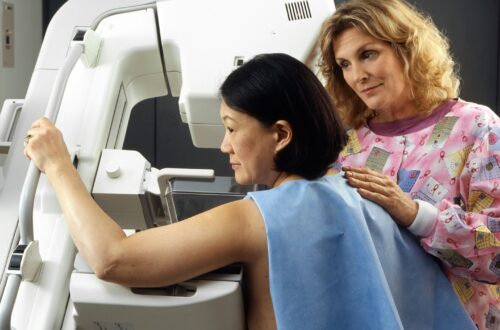While makeup can help boost confidence and aid in self-expression, it can also expose you to potential health hazards associated with certain ingredients and applications.
1. Heavy Metal Contamination
Makeup products can become contaminated with substances including arsenic, chromium, lead, cadmium, and mercury, sometimes exceeding established safe thresholds. However, even low-level repeated exposure to these substances can cause negative effects on your health when you are exposed to them in excess of the recommended amount.
When used in cosmetics, these metals can be absorbed by your skin and travel through your bloodstream, causing the following problems:
- Developmental delays
- Cognitive and reproductive damage
- Kidney disfunction
- Increased cancer risk
2. Acne Cosmetica
Using makeup is associated with the onset of acne cosmetica, a type of contact acne caused by cosmetic products such as foundation, blush, concealer, and hair and skin products.
This skin problem appears as groups of tiny closed comedones and bumps on your cheeks, chin, forehead, or other areas where makeup is applied. Unlike traditional acne, acne cosmetica does not flare with hormonal cycles.
Management of acne cosmetica involves discontinuing problematic products and makeup routines and treating the acne.
3. Allergic Reactions
Contact-allergic reactions to makeup can be either delayed or instantaneous.
The most significant allergens are fragrances and preservative agents, but you can experience an allergic reaction to any makeup ingredient. The gold standard for diagnosis is patch and prick testing to identify the corresponding causes.
If you experience an allergic reaction to a makeup product, consult a healthcare provider to determine which products are safe to use to avoid future allergic reactions.
Allergic reactions to ingredients in makeup include:
- Allergic contact dermatitis: This delayed reaction causes symptoms such as redness, itching, and inflammation, usually within one to three days after contact with the product.
- Photoallergic contact dermatitis: This is an inflammatory skin reaction that occurs when a product on or in your skin interacts with ultraviolet or visible light.
- Contact urticaria: This immediate skin reaction causes the rapid onset of hives within minutes to an hour of using a makeup product that contains an allergen.
4. Microbial Contamination and Infections
Makeup tools and supplies can support the development of staph, fungus, E. coli, and other pathogens. When these microbial pathogens contaminate your makeup, health problems such as acne, skin irritation, abscesses, cellulitis, and, in extreme situations, systemic infections can occur.
Makeup can also pose unique healthcare risks to your eyes. These problems include clogged oil glands that result in sties and corneal abrasions from makeup instruments or mascara.
When applied incorrectly and with contaminated products, eye makeup has been linked to conjunctivitis (pink eye), blepharitis, and other disorders that cause eye inflammation.
5. Potential Increased Risk of Cancer
An analysis of 50 random facial makeup products showed that many products contained ingredients with carcinogenic or cancer-promoting potential, including the following:
- Parabens, silica, and ethoxylated compounds: These ingredients were among the most common compounds with a potential carcinogenic effect in the analyzed group of facial makeup products.
- Makeup ingredients called formaldehyde donors, or formaldehyde releasers: These makeup ingredients work by releasing small amounts of the preservative formaldehyde, a known human carcinogen, over time.
The likelihood of your exposure to carcinogens leading to cancer is affected by factors such as the length of time you’re exposed to a given substance, the amount of carcinogen involved, your age, and your genetic predisposition to certain cancers.
6. Interference with Hormones
Several compounds used in makeup have the potential to interfere with your body’s hormonal balance and cause health problems by acting as endocrine disruptors. The neurological, immunological, and reproductive systems may be impacted by frequent or prolonged exposure to these substances based on the following evidence:
- Cosmetics, fragrances, and skincare products frequently include endocrine-disrupting chemicals, such as triclosan, parabens, and phthalates. These substances disrupt hormone systems and have been connected to metabolic problems, early puberty, fertility problems, and reproductive abnormalities.
- Parabens are linked with disrupted menstrual cycles, reduced ovarian follicle counts, altered hormone levels, and adverse birth outcomes (e.g., preterm birth and reduced birth weight).
7. Absorption of “Forever Chemicals”
Forever chemicals, or PFAS (per- and polyfluoroalkyl substances), are a large group of man-made chemicals known for their extreme resistance to breaking down, making them persistent for potentially thousands of years.
Research indicates that these chemicals are absorbed through the skin at higher rates than previously thought. This increases concern about the use of PFAS chemicals in routine makeup use.
PFAS exposure has been linked to health problems such as thyroid disruption, cancer, liver disease, immune dysfunction, and reproductive damage.

:max_bytes(150000):strip_icc()/IMG_09172-9ca0040fa5e74df0b5aac42d8125d477.jpeg)




